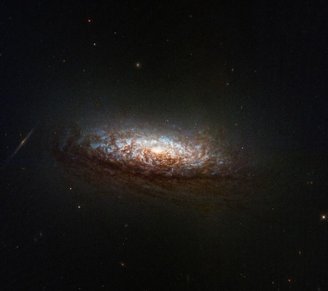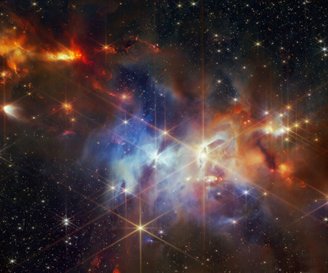The month of June is coming to an end, but the United States National Aeronautics and Space Administration (NASA), the European Space Agency (ESA), and the Canadian Space Agency (CSA) have captured stunning new images of many cosmic objects. During the missions, scientists used advanced instruments from telescopes such as Hubble and James Webb (JWST).
To present the high-quality images published throughout the month of June, I have compiled a list of some of the most impressive photographs from different cosmic regions. In total, the list brings together three NASA images that will impress astronomy enthusiasts. Check out!
NGC 2005 globular cluster
The NGC 2005 globular cluster was first discovered in 1826 as a result of observations by astronomer James Dunlop. The object was close to the Large Magellanic Cloud (LMC). The region is considered a very important discovery in terms of astronomy. as it has already provided evidence supporting the theory of evolution of galaxies through the process of mergers..
“A globular cluster that appears as an extremely dense and numerous collection of bright stars. Some appear slightly larger and brighter than others; the brightest ones have cross-shaped spikes around them. They are almost evenly distributed, but increasingly densely packed in the center, coalescing into a bright glow at the center of the cluster,” explains NASA.
Spiral galaxy NGC 1546
A new image of spiral galaxy NGC 1546 was captured by the Hubble Space Telescope on June 14; prior to this the equipment had been out of action for repairs for several weeks. Scientists collect data from the region He realized that the intense yellow glow at the galaxy’s core could represent an area with a large population of stars.; There may also be large areas of star formation.

“Hubble’s new image of a magnificent galaxy demonstrates the complete success of our new, more stable method of steering the telescope. We’re poised for many years of discovery ahead, and we’ll be observing everything from our solar system to distant exoplanets and galaxies. Hubble plays a powerful role in NASA’s astronomy toolset,” said Dr. Jennifer Wiseman, Hubble senior project scientist at NASA’s Goddard Space Flight Center.
Serpent Nebula
The James Webb Space Telescope’s near-infrared camera (NIRCam) captured an incredible image of the Serpent Nebula. The discovery came after researchers found a group of protostars; This is a common reaction that occurs when gas ejected from new stars collides with gas and dust in the region. The team’s current goal is to learn more about this star formation process..

“Astronomers have long assumed that stars would tend to spin in the same direction as clouds collapse to form stars. But this has never been seen so directly before. These long, aligned structures are a historical record of the fundamental path of star birth,” said principal investigator Klaus Pontoppidan of NASA’s Jet Propulsion Laboratory.
Did you like the content? So, stay updated with more curiosities about astronomy at TecMundo. If you wish, take the opportunity to understand whether a telescope can see the beginning of the Universe.
Source: Tec Mundo
I’m Blaine Morgan, an experienced journalist and writer with over 8 years of experience in the tech industry. My expertise lies in writing about technology news and trends, covering everything from cutting-edge gadgets to emerging software developments. I’ve written for several leading publications including Gadget Onus where I am an author.













